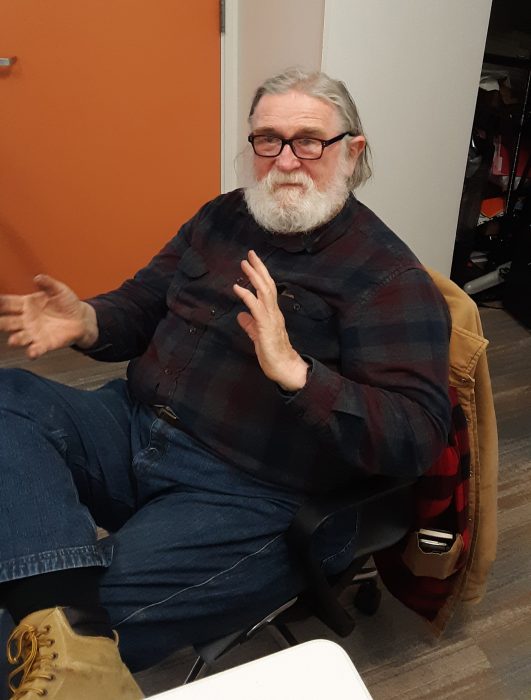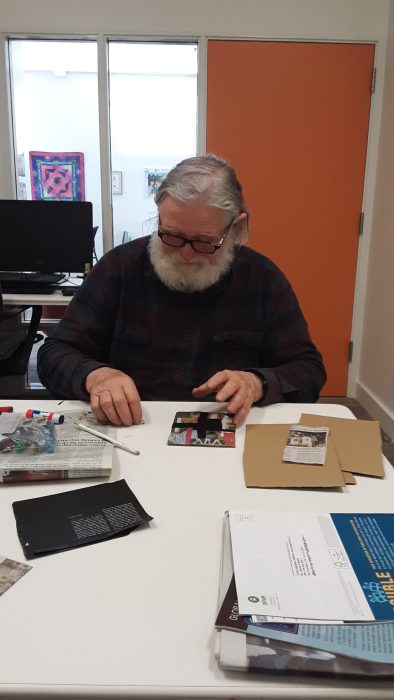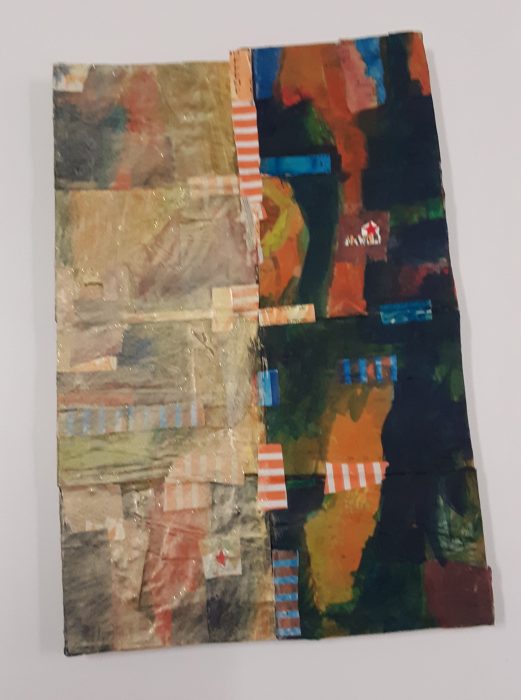Longtime Randall Museum ceramics teacher and SFMOMA docent believes all humans hardwired to be creative
How many teachers do we know whose deepest concern is over-enrollment? That was a worry of Dennis Treanor, a practiced art educator. Through word of mouth and social media, his ceramics classes filled to the brink every term. He worried about limited resources and his ability to give sufficient time and energy to each student.
He headed up the ceramics department at San Francisco’s Randall Museum for 35 years, teaching all ages, from pre-schoolers to seniors, before retiring in 2009. In addition, he was contracted by the San Francisco Museum of Modern Art, where he has been a volunteer docent for 27 years, to train those who would be working with elementary, middle- and high school audiences.

Two masters’ degrees from San Francisco State contributed to his expertise, but so did his passion to engage others in creating their own unique work.
Treanor, now 74, believes human beings are hardwired to be creative.
Art a spiritual act
“By early adulthood I came to realize that the creative act is at its core a spiritual act,” he said, “and the moral expression of that act by myself is embodied in helping others `find themselves in a clearing’ by the act of teaching art in many forms.”
“Make and Take” arts and crafts activities that drew hundreds in the course of a day were added to Treanor’s schedule at holiday time. The museum’s ceramics and art studios were next door to each other, so it was easy for him to contribute to projects and activities that called upon his knowledge of other art forms, such as painting, drawing and collage.
He also contributed to the design and installation of exhibits. “I and my colleagues did many all-nighters to get exhibits ready for opening the next day. It was hard work doing this on top of my other duties.”
When people talk about their jobs as `heavy lifting,’ it’s usually metaphoric. For Treanor, it was literal: “Most of the time, I was a staff of one, doing physical labor such as storing five tons of clay each year, making ceramic glazes, firing kiln all day, repairing and maintaining the studio equipment.”

By the age of 12, Treanor was making collages, and by 13 he knew he wanted to teach art. With the help of instructors who became mentors, his future was made certain when he enrolled in an elective ceramics course in high school.
Dabbling with fire
That choice was encouraged early in his work at the museum when he was introduced to a group of teachers visiting from Japan.
“When introduced, they bowed to me; I bowed back,” he said. “Afterward my colleague told me that teachers were held in high regard in Japan, and that their bow was a sign of respect. This incident reminded me how important my work as a teacher was and would continue to be.”
But ceramics wasn’t his first job that involved hard work – or fire.
In his early 20s, while studying art at San Francisco State, he was a woodland firefighter and conservation worker at Sierra Nevada and California coast ranges.
“It was 12-hour shifts mostly at night. We did `mop-up’, working from the fire line (100 feet or more,) looking for any burning material that could flare up,” he said. “This was dirty and painstaking work. Every fire was memorable. All in all, I am content to tend the fire in a wood burning kiln.”
But the experience, “outside my introverted, academic comfort zone,” he said, gave him skills and competencies that served him as an artist and teacher.

So did his love of music, which he finds enhances the learning environment. During classes at the museum, he played his own mixed tapes and CDs ranging from Western Swing to Chicago Blues to Classical. “I even fired a wood burning kiln as Louis Armstrong’s 1920 Chicago jazz wailed,” he said, adding that even as a docent at SFMOMA, “I led tours which incorporated recorded music as a way of exploring an artwork.”
Art’s partner: music
Music was part of his life nearly as early as the arts.
Treanor remembers his mother and father, a furniture salesman, who lovingly tagged him with the moniker “professor” as the oldest of three brothers and one sister who gathered for the evening meal in their Outer Sunset home. His father would play concertos on a record player and quiz Treanor: Who is the composer? What is the title?’
He still has two terabytes of music files on his computer, and is always listening to something –classical, jazz, folk, country. “You name it,” he said. “Music is the soundtrack of my daily life.”
And he’s never abandoned the arts.
“My ever-yielding joy in retirement has been to participate in a creative setting for the last 11 years,” he said, mentioning Clay Creation Studio in Pacifica as one.
Even during the pandemic, he found ways to be creative.
“Making collages kept me sane for two years. When my favorite coffeehouse, La Promenade Café, reopened, I celebrated there by making torn paper collages from my morning paper right after I read it. I would then photograph the results on my camera phone.”
Treanor exhibits his work at the La Promenade Café on Balboa Street and he’s putting in a new exhibit at the end of the month. He is also planning to hold ceramics classes every other month at the San Francisco Village, a nonprofit, membership organization that connects older adults in a community.
“I rest; I rust” is Treanor’s mantra.


He teamed up with the owner of Clay Creation Studios and others, putting their work up for sale to raise funds for the refugees of Ukraine. “We raised $9,000 in two days,” he said. “Art making can be a moral practice.”
The native San Franciscan and Richmond district resident stays close to his brothers, John and Bob, and sister, Rita. They all look forward to a less cautious approach to Covid. “Soon, we will be dining and partying together – my family is full of great cooks.”
His sister lives 20 minutes away. They take walks and visit museums.
“My great pleasure as a retired senior is to go to a coffeehouse, spread out and read the morning papers, drink black coffee,” he said. “My social circle has also expanded greatly during my retirement.
And then, there’s always music.
He’s giving himself time and space to learn more about the theory and practice of music – with a focus on the violin.
“This may be the year I try my hand at learning a musical instrument,” he said, citing a quote from Mahatma Gandhi – “One might not think what one is doing is significant, but it is very important that you do it.”





